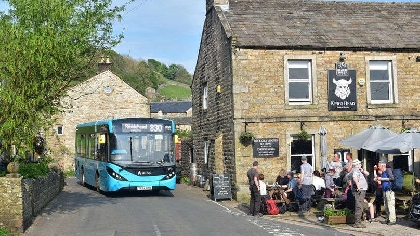
The ‘near threatened’ native red squirrel is maintaining its range in the Yorkshire Dales National Park, a monitoring report has concluded. There is also anecdotal evidence that the reds’ range may have increased in recent years.
Grey squirrel control undertaken in the National Park’s ‘core area’ for reds – mainly Sedbergh, Garsdale and the Upper Eden valley – is said to have been a ‘crucial’ factor.
The conservation research and monitoring report has been published by the Yorkshire Dales National Park Authority in partnership with Red Squirrels Northern England (RSNE). It has been produced as a result of the 2011 Local Biodiversity Action Plan, which identified red squirrel as a priority species for conservation within the National Park. The completion of the ten-year action plan, at the end of last year, has prompted an assessment of the status of priority species and habitats.
Co-author Heinz Traut, Project Manager at RSNE, said: “The results detailed in our report show that red squirrels have maintained their range in the core areas of the Yorkshire Dales National Park since at least 2012. This is thanks to the dedication and efforts of many local volunteers, land managers and organisations, including YDNPA, which have helped red squirrels to thrive here. Where the provision of suitable habitat and the exclusion of grey squirrel competition is facilitated, reds will continue to do so.”
The Member Champion for Natural Environment at the Yorkshire Dales National Park Authority, Ian McPherson, said: “There are four red squirrel groups working in the National Park and this monitoring report is a testament to their committed stewardship. For many years now the Penrith and District, Mallerstang, Garsdale and Sedbergh red squirrel groups have been keeping an eye on the native reds and culling the greys, which otherwise would likely take over.
“Given the long-standing work of these local groups in the Cumbria part of the National Park, the National Park Authority has focussed its work in North Yorkshire where no active groups are present. We are delighted that red squirrels in places such Langstrothdale and Snaizeholme are doing well. However, I would like to echo the authors’ note of caution about the reds’ expansion to places such as mid-Wensleydale: it is not clear if there is sufficient suitable habitat and grey squirrel control for the reds’ to sustain their expanded range. More conservation work must be done in the National Park to help red squirrels but for now we can celebrate that populations of this priority species continue to be stable.”


 Council chiefs agree record £2.5m investment in car parks
Council chiefs agree record £2.5m investment in car parks
 Summer bus services in the Dales extended
Summer bus services in the Dales extended
 Dales pub landlady loses enforcement notice appeal
Dales pub landlady loses enforcement notice appeal
 Ex-National Park head and son pay tribute to Pennine Way in song
Ex-National Park head and son pay tribute to Pennine Way in song
 A PRESSING engagement at Gallery on the Green
A PRESSING engagement at Gallery on the Green
 Dales pavilion featured in TV advert becomes thriving hub
Dales pavilion featured in TV advert becomes thriving hub
 Planners refuse Richmond housing development
Planners refuse Richmond housing development
 Wider ban on heather burning ‘risks catastrophic wildfires’
Wider ban on heather burning ‘risks catastrophic wildfires’
Comments
Add a comment